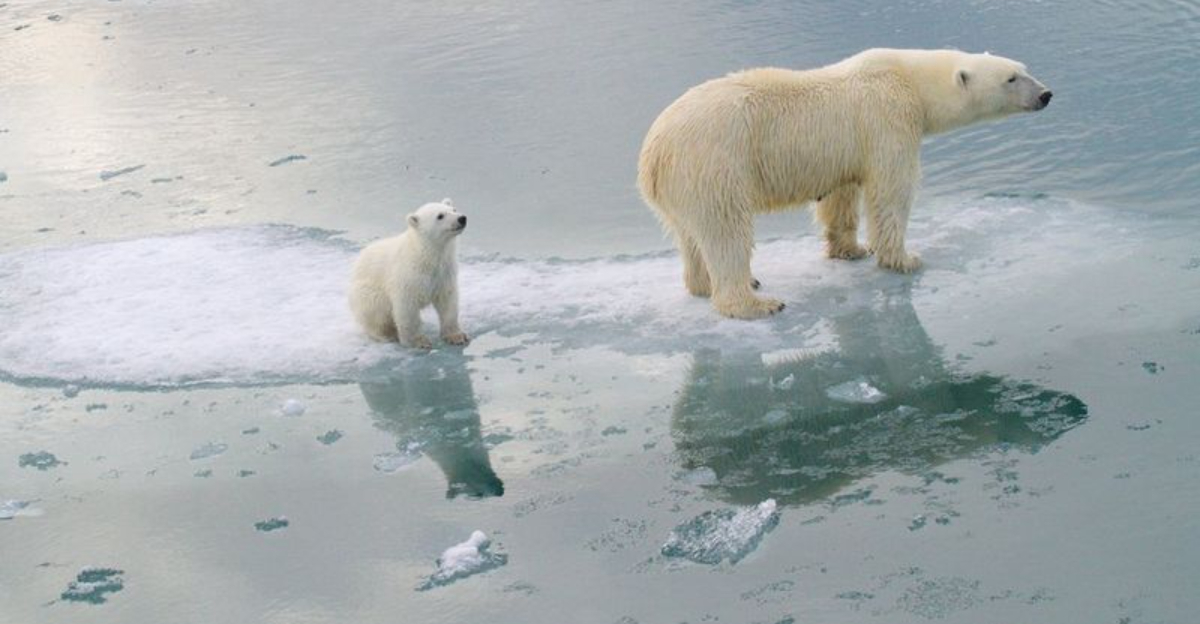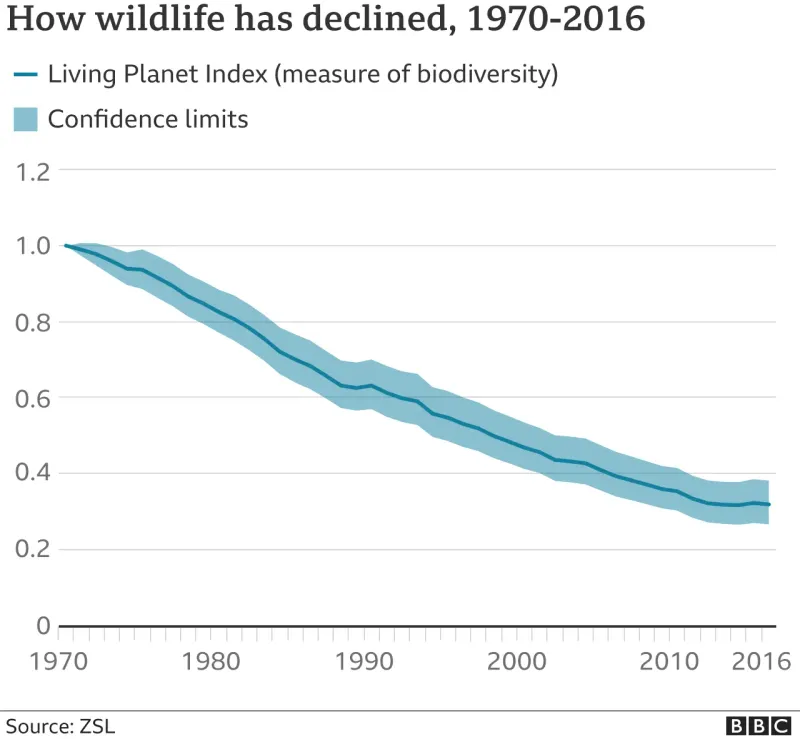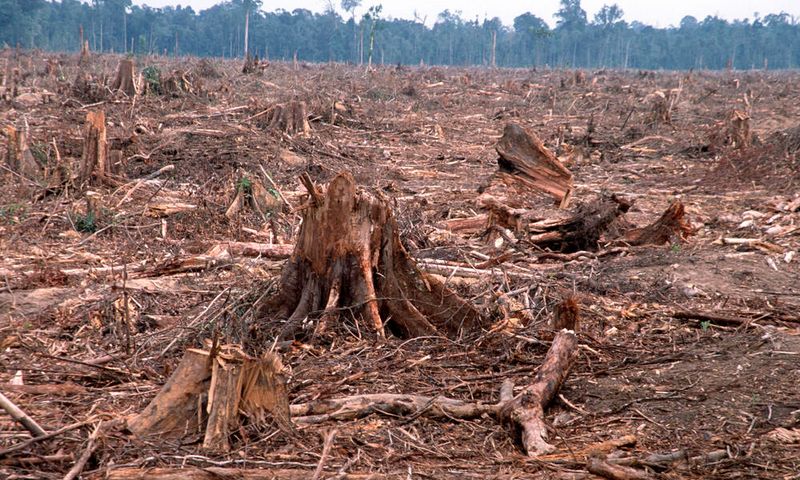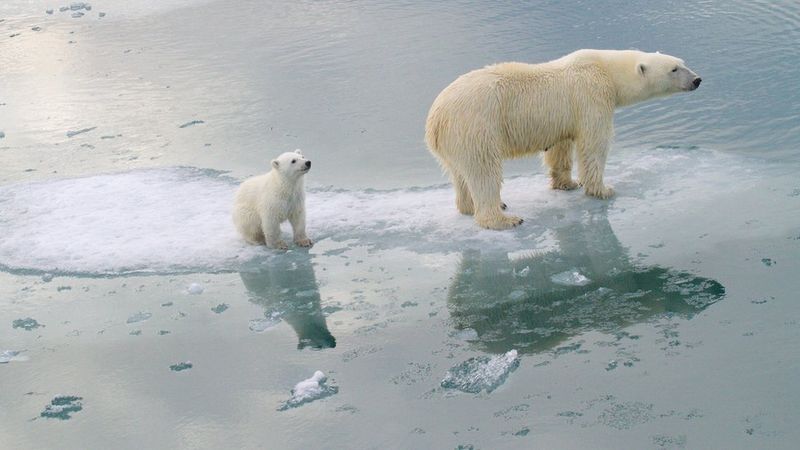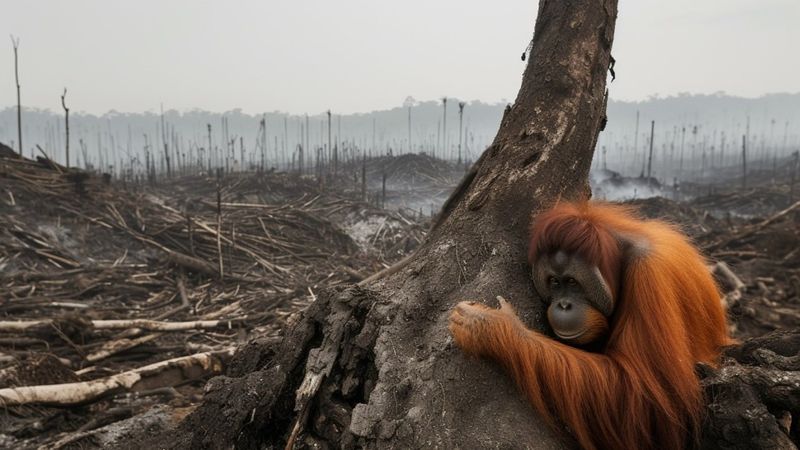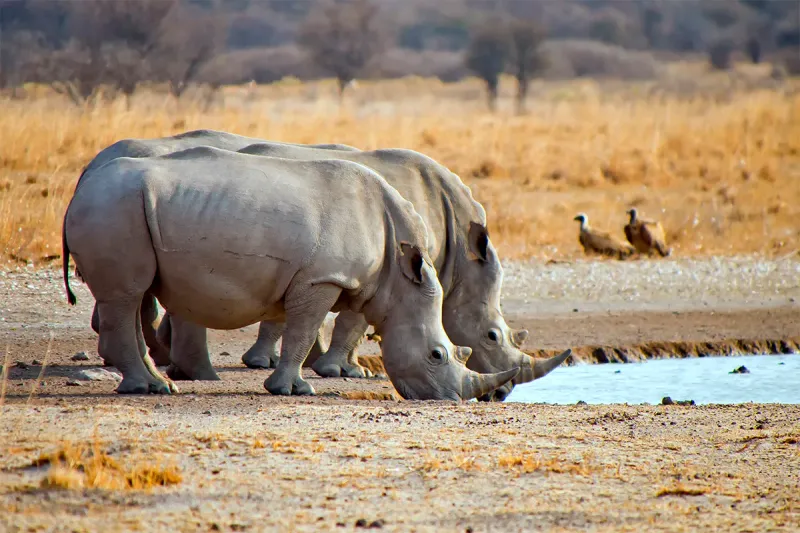Our planet is experiencing an alarming decline in wildlife populations that scientists believe signals the beginning of Earth’s sixth mass extinction event. Unlike previous extinctions caused by natural disasters, this one stems directly from human activities like habitat destruction and climate change. The speed at which species are disappearing has reached unprecedented levels, with extinction rates now 35 times faster than historical norms.
Wildlife Populations in Freefall
Nearly half of all animal species worldwide are shrinking in number, according to a groundbreaking 2023 study that examined over 71,000 species. The research revealed a shocking imbalance: 48% of animal populations are declining while only 3% show any growth.
These numbers paint a grim picture far worse than previous estimates. Many creatures are disappearing before scientists can even document them, creating what experts call an “extinction debt” that will continue to unfold for generations.
The collapse isn’t limited to exotic species in distant rainforests. Even once-common animals like certain butterflies, amphibians, and songbirds have experienced dramatic declines in regions across the globe. This widespread pattern across different animal groups and habitats provides compelling evidence that we’re witnessing the early stages of a mass extinction event.
Vanishing Habitats, Vanishing Species
Habitat destruction stands as the single greatest threat driving today’s extinction crisis. When bulldozers clear forests for agriculture or urban development, they don’t just remove trees – they eliminate entire ecosystems that countless species call home.
The Amazon rainforest alone loses an area equivalent to a football field every minute. Such rapid transformation leaves animals with nowhere to go. Large creatures like jaguars require vast territories to survive, while specialized species such as poison dart frogs can’t simply relocate when their microhabitats disappear.
Marine habitats face similar devastation. Coral reefs, supporting 25% of all marine species, are dying worldwide due to warming oceans and pollution. Without immediate action to protect remaining wild spaces, countless species will lose the habitats they’ve evolved to depend on over millions of years.
Climate Change: The Extinction Accelerator
Rising global temperatures are reshaping our planet faster than many species can adapt. Polar bears now swim exhausting distances between shrinking ice floes. Alpine species retreat upslope until they literally run out of mountain.
Beyond temperature alone, climate change triggers cascading ecological disruptions. When spring arrives earlier, plants flower before their pollinators emerge. Ocean acidification dissolves the shells of marine creatures, collapsing food webs from the bottom up.
Perhaps most alarming are climate tipping points – thresholds beyond which entire ecosystems transform irreversibly. The bleaching of Australia’s Great Barrier Reef shows how quickly such collapses can occur. With each fraction of a degree of warming, more species face extinction as their environmental conditions shift beyond their evolutionary capacity to respond.
Ripple Effects Across Ecosystems
Nature functions as an intricate web where each species plays a vital role. Remove one strand and the entire structure weakens. When wolves disappeared from Yellowstone, elk populations exploded, leading to overgrazing that transformed rivers and reduced biodiversity throughout the park.
Such cascading effects occur worldwide as keystone species vanish. Pollinators like bees enable reproduction for 80% of flowering plants, including many crops humans depend on. Their decline threatens both wild ecosystems and food security.
The loss of apex predators like sharks allows mid-level predators to multiply unchecked, disrupting marine communities. Even seemingly insignificant creatures like dung beetles provide essential services – without them, grasslands would become smothered in waste. Each extinction weakens nature’s resilience, making ecosystems more vulnerable to collapse.
Hope Amid Crisis: Conservation Success Stories
Against the backdrop of extinction, remarkable conservation victories show what’s possible when humans commit to protecting biodiversity. The California condor, reduced to just 22 individuals in the 1980s, now soars again with over 500 birds thanks to captive breeding programs and habitat protection.
Mountain gorillas have increased from 620 to over 1,000 individuals through community-based conservation that benefits both wildlife and local people. Innovative approaches like wildlife corridors connecting fragmented habitats help species adapt to changing conditions.
The recovery of sea otters along the Pacific coast demonstrates how protecting single species can restore entire ecosystems – as otters returned, they controlled sea urchin populations, allowing kelp forests to regrow and carbon sequestration to increase. These success stories provide blueprints for action and remind us that while we may be causing the sixth mass extinction, we also hold the power to prevent it.
